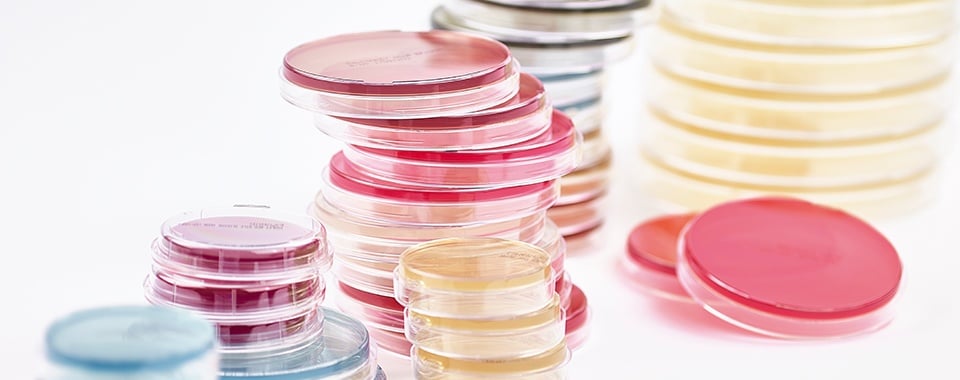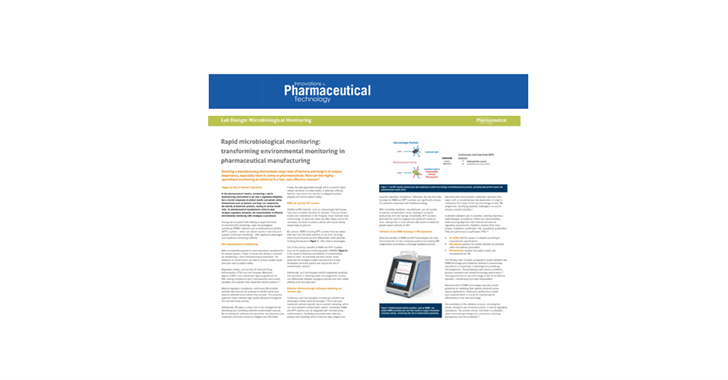Other common names
The various manufacturers of dehydrated culture media do refer to TSA (Tryptone Soya Agar) by other names, as mentioned here. For products including neutralisers, some prepared media manufacturers use letters to denote the neutralisers included, such as LTTh. Cherwell have two typical presentations, media with Lecithin & Tween added or our Neutraliser 4 which also includes L-Histidine and Sodium Thiosulphate.
Primary Use
Tryptone Soya Agar (TSA) plus Neutralisers is a general-purpose medium for the growth of a wide variety of organisms, including both aerobes and anaerobes, the latter requiring anaerobic conditions. Neutralisers are included to inactivate disinfectant residues and therefore this medium is typically used in Contact plates.
Technical characteristics
The medium’s simple formulation consists of two types of peptone, Sodium chloride and agar, plus up to four disinfectant neutralisers.
| Typical formulation: | g/ltr |
| Pancreatic digest of casein | 15.0 |
| Enzymatic digest of soya bean | 5.0 |
| Sodium chloride | 5.0 |
| Agar | 15.0 |
| Neutralisers used in Redipor products include: | |
| Lecithin | 0.7g |
| Tween 80 ® | 5.0ml |
| L-Histidine | 1g |
| Sodium thiosulphate | 0.5g |
To help offset the inclusion of the neutralisers, we typically supplement the agar content by adding a minimum of 1g of agar per litre.
Fresh and Irradiated TSA pH 7.3 ±0.2
Applications
The main application for Tryptone Soya Agar (TSA) plus Neutralisers is in environmental monitoring within pharmaceutical cleanrooms and sterile facilities. It is commonly gamma irradiated for increased sterility assurance. The medium is typically presented in Contact plates for surface monitoring to assess efficacy of cleaning regimes and to also assess gowning capabilities of operators.
Related reading:
- Are all contact plates the same when it comes to em?
- Why use neutralisers in your environmental monitoring plates?
- New cleanroom standard for microbiological contamination bs en 17141:2020
Appearance
The prepared media is pale straw to straw in colour with a slightly opaque appearance.
Organisms & morphology
Tryptone Soya Agar (TSA) plus neutralisers will support growth of a wide range of aerobic and anaerobic bacteria if incubated under the right conditions A typical set of control organisms and the phenotypic identification associated with these are below.
Related reading:
|
|
Morphology |
Gram |
Biochemical test |
||||
|
Organism |
Edge |
Shape |
Colour |
Gram |
Shape |
Catalase |
Oxidase |
|
Staphylococcus aureus |
Smooth |
Regular |
Yellow/ Cream |
Positive |
Cocci |
Positive |
Negative |
|
Staphylococcus epidermidis |
Smooth |
Regular |
Yellow/ Cream |
Positive |
Cocci |
Positive |
Negative |
|
Escherichia coli |
Smooth |
Regular |
Cream |
Negative |
Rods |
Positive |
Negative |
|
Bacillus subtilis |
Irregular |
Irregular |
Cream |
Positive |
Rods |
Positive |
Variable |
|
Pseudomonas aeruginosa |
Smooth |
Regular |
Cream |
Negative |
Rods |
Positive |
Positive |
|
Morphology |
|||
|
Fungal |
Edge |
Shape |
Colour |
|
Candida albicans |
Smooth |
Regular |
Cream |
|
Aspergillus brasiliensis |
Irregular |
Irregular |
White to black |
Typical incubation parameters
As Tryptone Soya Agar (TSA) plus Neutralisers is a general-purpose medium, it can be incubated at differing temperatures depending on the target organisms. In environmental monitoring applications it is common for plates to be incubated at 30-35ºC for bacterial colonies and 20-25º for mould and fungi.
It is worth noting that the morphology seen on Tryptone Soya Agar (TSA) plus Neutralisers can look different during prolonged incubation times for certain bacterial cultures, where an irregular edge can be seen.
Tryptone Soya Agar (TSA) is a Harmonised Pharmacopoeia medium and as such is mentioned in the BP/EP/JP, as well as the US Pharmacopoeia.
|
EP Chapter Ref 2.6.12 Microbial examination of non-sterile products: Microbial enumeration tests |
|||
|
Recommended Culture Media |
Property |
Micro-organisms |
Incubation Time & Temp |
| Casein Soyabean Digest Agar |
Growth promotion |
Bacillus subtilis |
30-35ºC for < 3 days |
|
Growth promotion |
Candida albicans |
30-35ºC for < 5 days |
|
The use of Neutralisers is also mentioned with cross references for efficacy against groups of disinfectants.
|
EP Chapter Ref 2.6.12 Microbial examination of non-sterile products: Microbial enumeration tests Table 2.6.12.-2. |
|
| Interfering substances | Potential neutralising method |
| Gluteraldehyde, Mercurials |
Sodium hydrogen sulphite (Sodium bisulphite) |
|
Phenolics, alcohol, aldehydes, sorbate |
Dilution |
|
Aldehydes |
Glycine |
|
Quaternary Ammonium Compounds (QAC’s), |
Lecithin |
|
QAC’s, iodine, parabens |
Polysorbate (Tween) |
|
Mercurials |
Thioglycollate |
|
Mercurials, halogens, aldehydes |
Thiosulphate |
|
EDTA |
Mg2+ or Ca2+ ions |
More information on our products
Does Plate Choice Change Sampling Accuracy?
Comparative Analysis of Petri Dish Variation in Flow Rate for Air Sampling. This extended report aims to further investigate the variations in flow rate observed in petri dishes used for air sampling, focusing on the potential factors contributing to these fluctuations.






